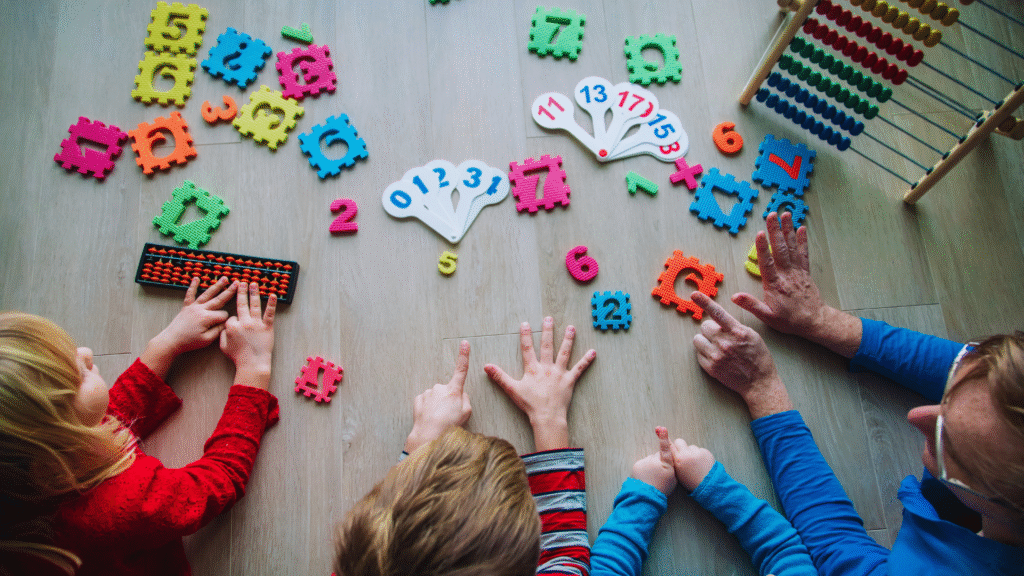Creating a positive learning environment is essential for children to thrive academically and personally. Encouraging curiosity and providing engaging activities can transform their view of learning from a chore into an exciting journey. Parents and educators play a crucial role in fostering a love for knowledge through various strategies.
Incorporating hands-on experiences and interactive lessons makes learning appealing. Activities that resonate with children’s interests can spark enthusiasm and motivate them to explore new subjects. When children see the relevance of what they learn, they are more likely to engage deeply and retain information.
Building a supportive atmosphere where questions are welcomed helps to create a safe space for exploration. Celebrating effort and progress, rather than solely focusing on grades, instills confidence. This approach not only enhances learning but also nurtures a lifelong passion for discovery.
Cultivating a Positive Learning Environment
Creating an atmosphere conducive to learning involves fostering curiosity and reducing anxiety. Both elements are crucial in helping children thrive and enjoy their educational experiences.
Fostering Natural Curiosity
Encouraging a child’s natural curiosity is essential for effective learning. Teachers and caregivers can spark interest by presenting engaging questions and real-world problems. For example, when introducing a new topic, asking open-ended questions invites exploration.
Incorporating hands-on activities makes learning tangible. Science experiments or interactive storytelling can ignite children’s imaginations. Establishing a routine that allows for exploration and creativity nurtures this curiosity.
Creating a collaborative environment also plays a role. When children work together on projects, they can exchange ideas and learn from each other. This peer interaction fuels curiosity, making learning an enjoyable experience.
Minimizing Anxiety in Learning
Reducing anxiety in a learning environment fosters better engagement and retention. A supportive atmosphere helps children feel comfortable making mistakes. When failure is viewed as a learning opportunity, it encourages risk-taking.
Implementing structured routines can provide clarity for children. Knowing what to expect helps to alleviate stress. Clear instructions and consistent feedback contribute to a sense of security.
Incorporating mindfulness techniques can also be beneficial. Simple practices, like deep breathing or short breaks, help children manage their emotions. A calm atmosphere reduces anxiety, allowing kids to focus on learning without fear.
Incorporating Interactive Learning Tools
Interactive learning tools engage students actively in the learning process, making education more enjoyable. These tools can come in various forms, including educational games that facilitate learning through play.
Utilizing Educational Games
Educational games create a fun environment that encourages children to explore new concepts. They combine learning objectives with engaging mechanics, allowing kids to develop skills while playing.
Examples of educational games include:
- Math-based puzzles that reinforce arithmetic skills.
- Language games that build vocabulary through interactive storytelling.
Using games also promotes teamwork and problem-solving skills. Children learn to collaborate with peers, enhancing their social abilities. By integrating such games into lessons, educators can cater to different learning styles, making content accessible and enjoyable.
Incorporating educational games fosters a positive attitude toward learning, encouraging kids to approach challenges with enthusiasm.
Developing Consistent Learning Habits
Creating consistent learning habits is essential for fostering a lasting appreciation for education in children. Establishing routines and promoting self-directed learning can significantly enhance their engagement and retention.
Establishing Routines
Routines provide a structured framework that helps children feel secure and focused. Parents and educators can implement daily schedules for homework, reading, and creative activities. A typical routine might include:
- Morning Review: Briefly go over the day’s learning goals before starting.
- Dedicated Learning Time: Set aside specific times each day for study or educational activities.
- Reflection Time: Encourage reflection at the end of the day to reinforce what was learned.
Incorporating these elements into a daily schedule helps children manage their time effectively. Consistent routines reinforce expectations and minimize distractions, allowing children to develop a sense of responsibility regarding their studies.
Encouraging Self-Directed Learning
Self-directed learning empowers children to take charge of their educational journeys. It nurtures their initiative and curiosity. To facilitate this process, parents can:
- Provide Choices: Allow children to choose topics that interest them within structured assignments.
- Set Goals: Help them establish personal learning objectives to foster motivation.
- Encourage Exploration: Support inquiries that lead to independent research, encouraging the use of various resources like books, websites, and documentaries.
Promoting self-directed learning helps children develop critical thinking skills. It motivates them to pursue knowledge beyond formal instruction, laying the groundwork for lifelong learning.





